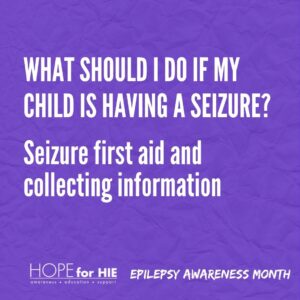
Knowing seizure first aid is something EVERYONE should know. Just like becoming CPR-trained, it’s a skill you hope you don’t have to use, but glad you’ll have it if you do. The Epilepsy Foundation offers two tracks for getting seizure first aid trained – one is a 30 minute OnDemand course, offered online and fully accessible 24/7, and one is a certification program that is instructor-led.
We recommend all HIE parents, extended family and friends, caregivers, educators and other community members become seizure first aid trained. It’s something that everyone can feel empowered to do!
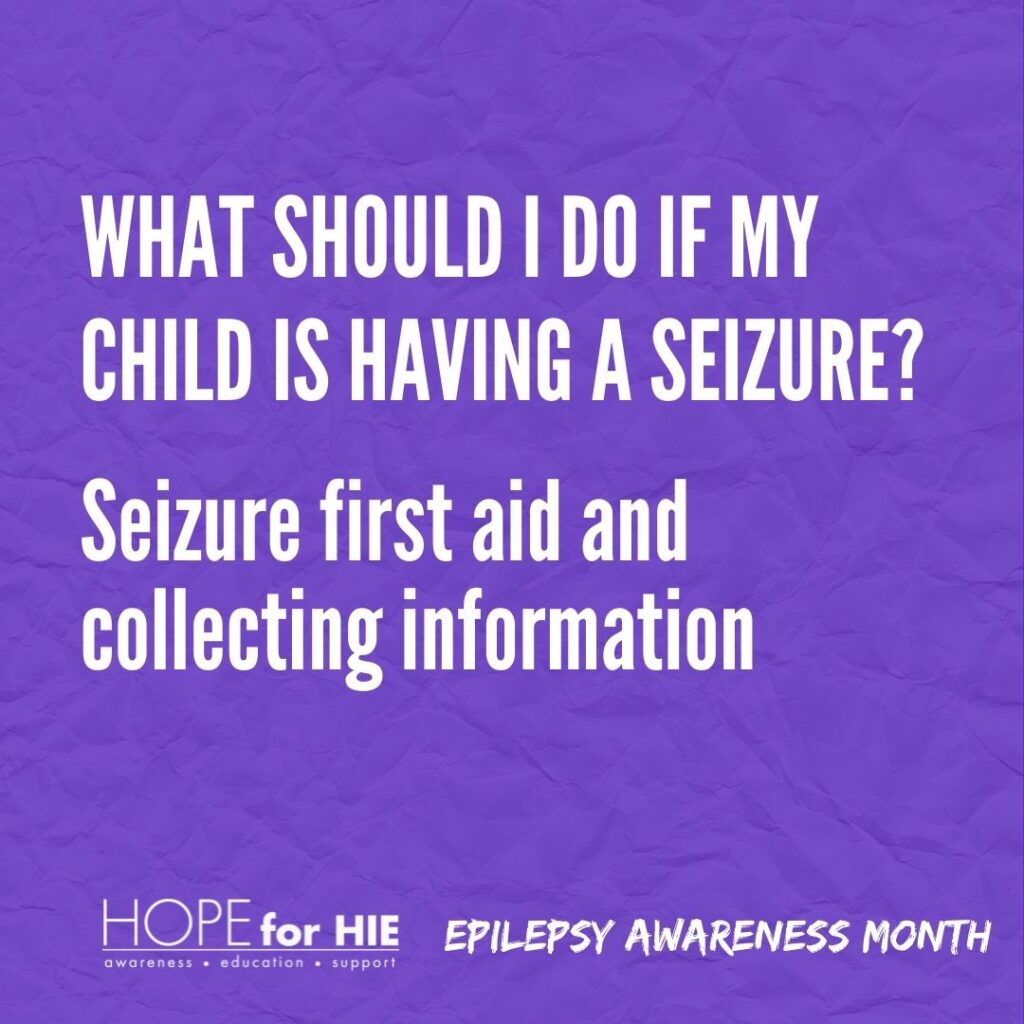
If you find your child having a seizure, it’s important to try to stay calm, and follow seizure first aid. We have a few nuances we’d like to share should this happen to your child, and for the first time. Seizures that appear in childhood with HIE tend to happen surrounding big developmental leap times like ages 4, 6, 8 and in puberty. Age 8-9 is a common time for hormones to start changing and can be a peak time for new seizures to begin.
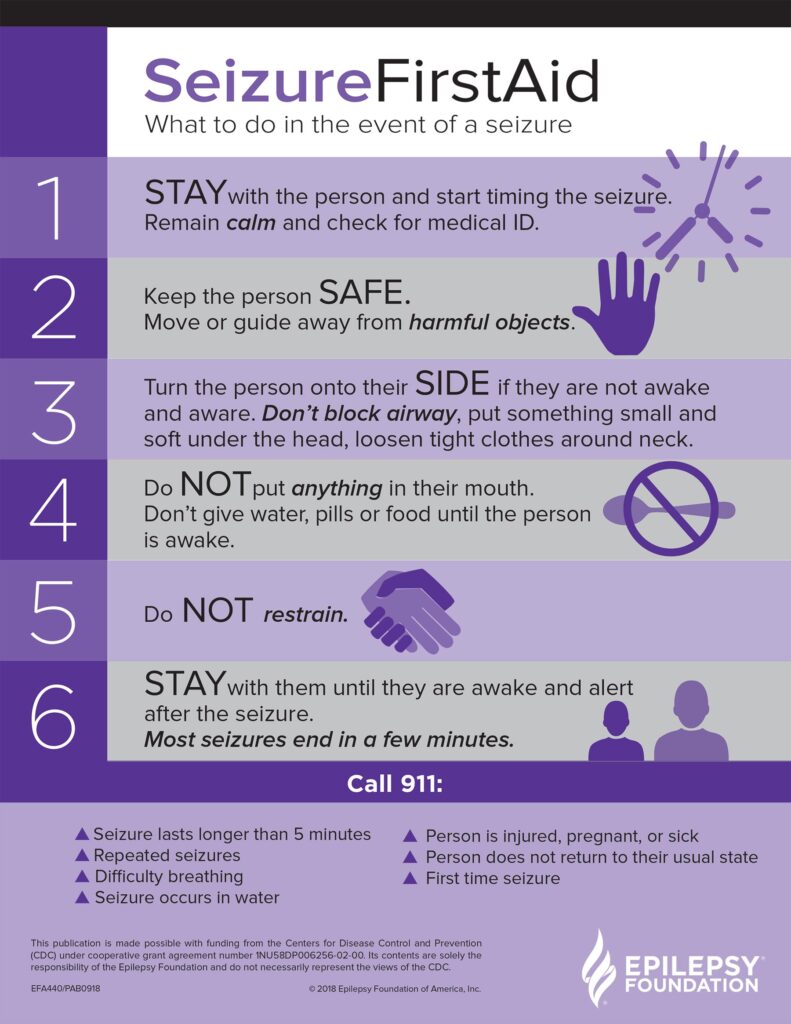
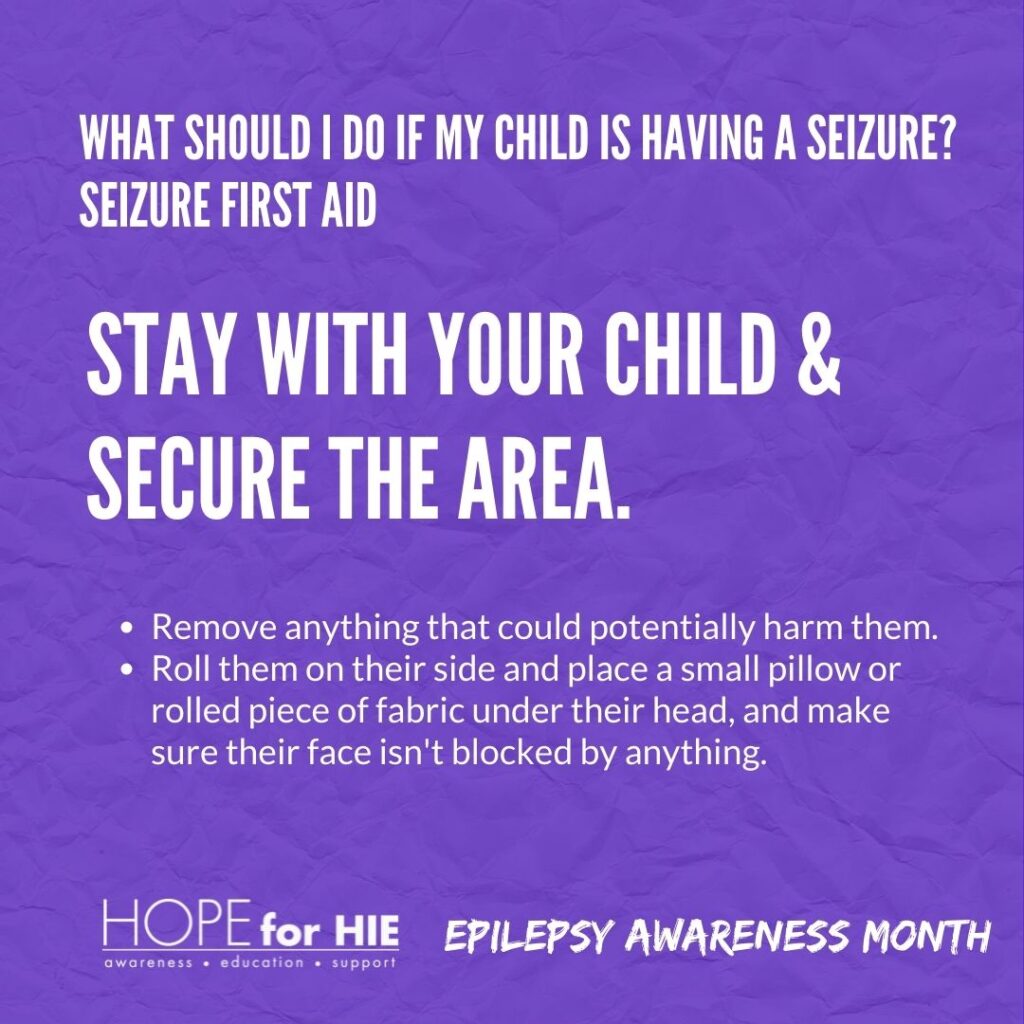
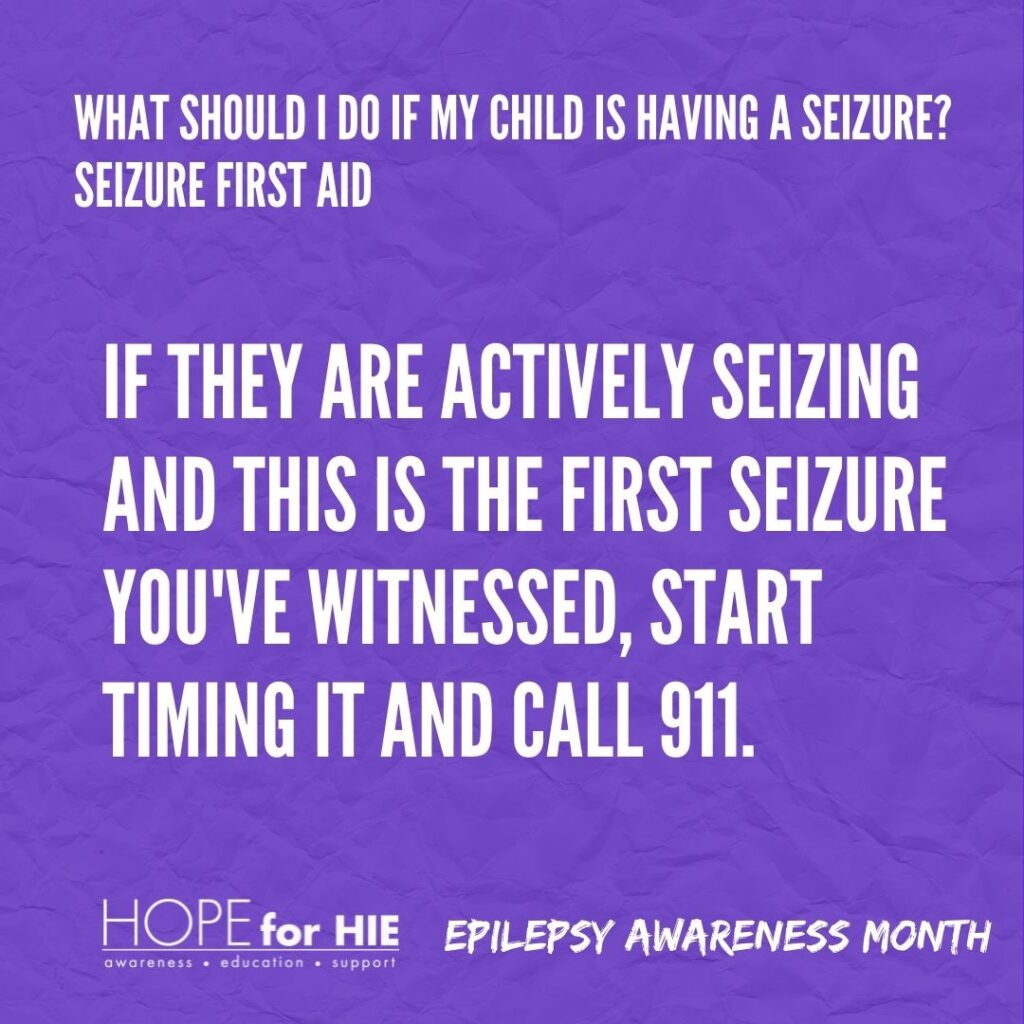
If this is the first seizure you have witnessed and they are actively seizing, call for emergency help, and begin timing the seizure.
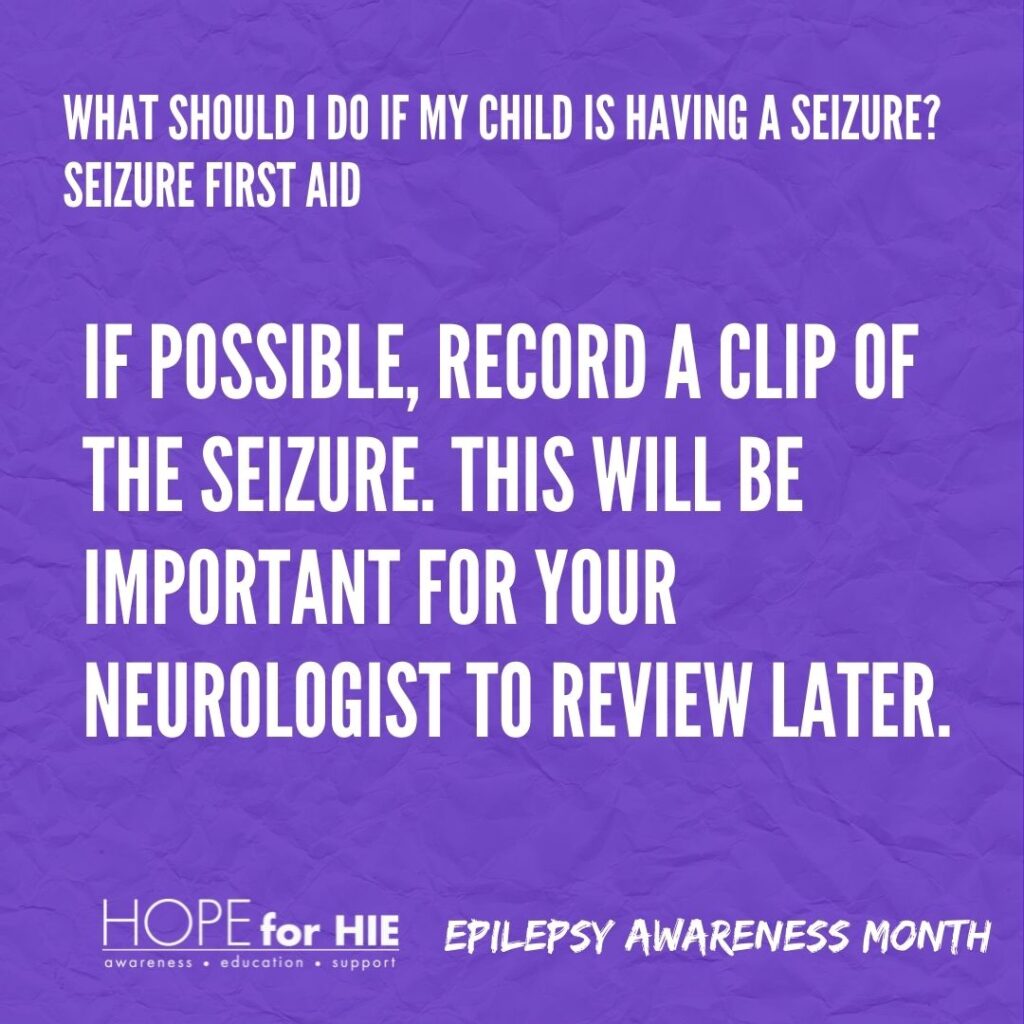
If this is the first seizure you have witnessed, or a new or different type, it is extraordinarily helpful to have even a short 10 second clip of the seizure to pass along to your neurologist after your child has stopped seizing. They can more easily identify the type, and it can help in the next steps for developing a treatment plan.
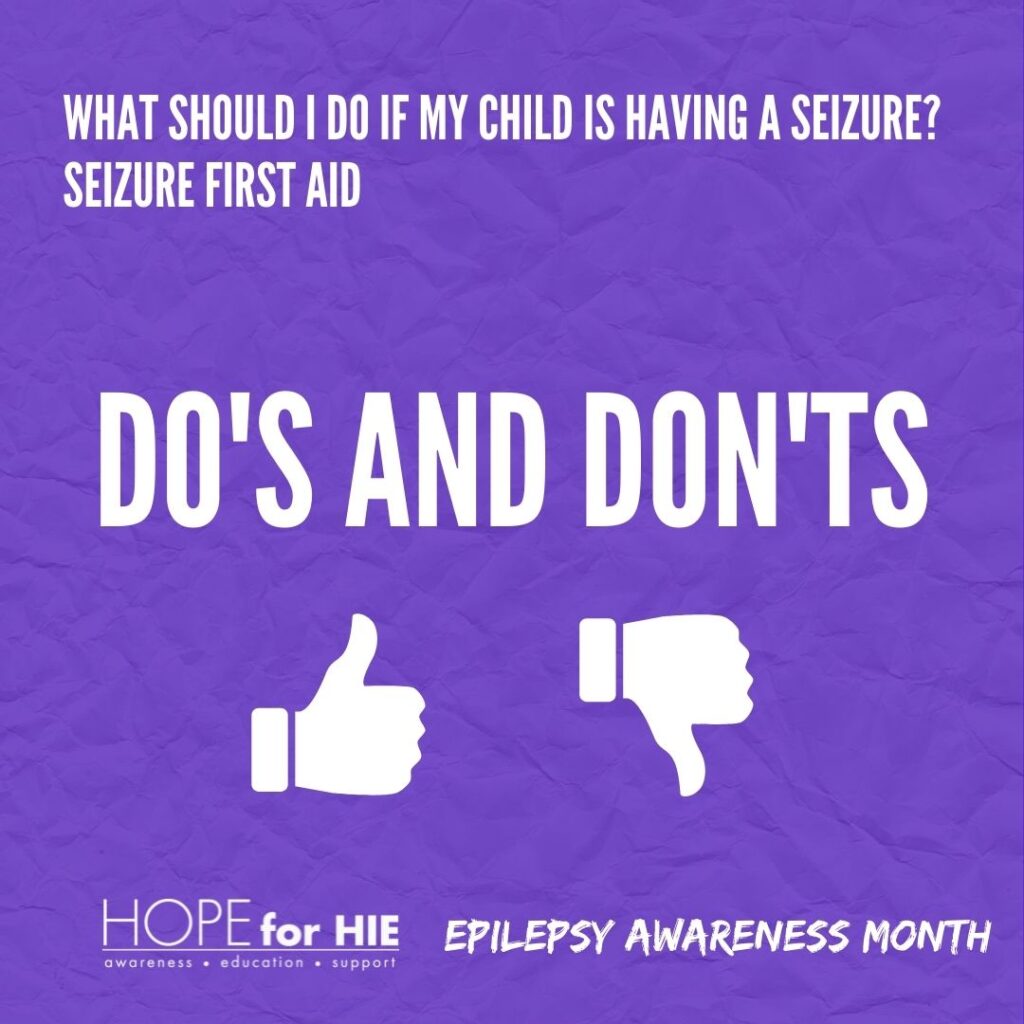
DO:
DON’T
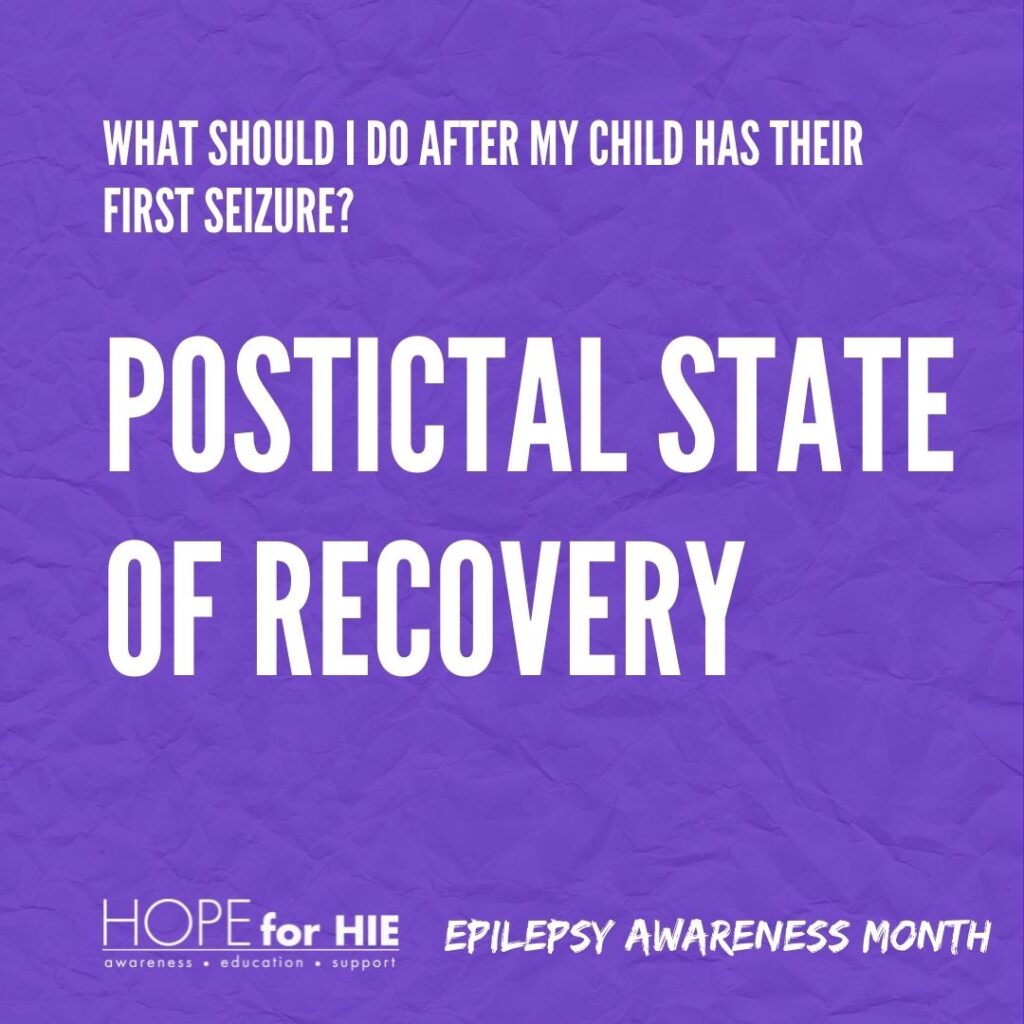
Post-seizure is called the postical state. It can last from several minutes to several hours until someone has fully recovered and rested from their seizure.
Common postictal symptoms:
Connect with families, read inspiring stories, and get helpful resources delivered right to your inbox.